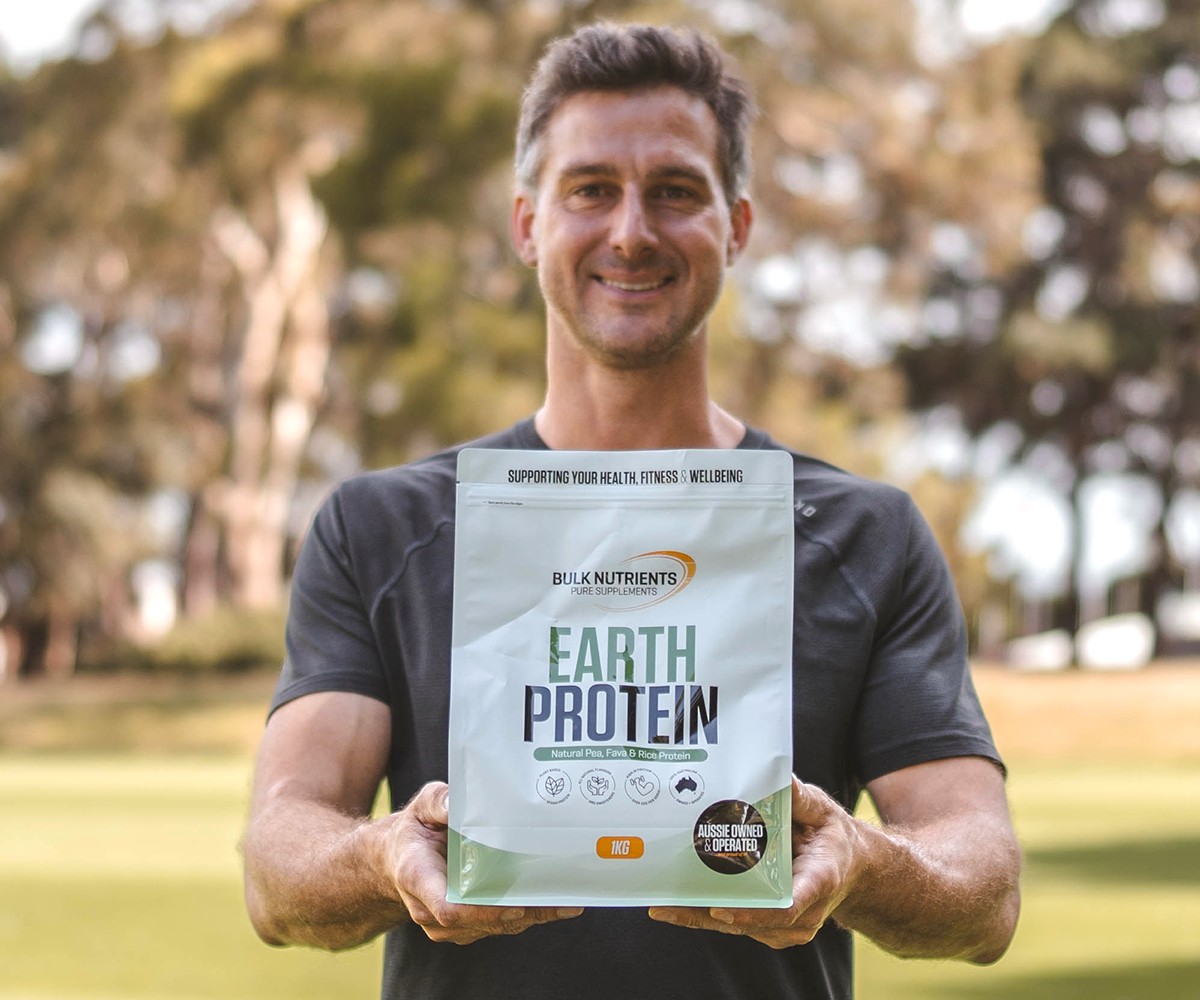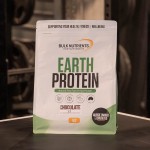How to Choose the Best Dairy Free Protein for You?

Have you been searching for a dairy-free protein that supports muscle recovery after training? You’ve come to the right place.
Here at Bulk Nutrients, we offer a wide range of plant-based protein powders. But today we’re looking at just two, our best dairy-free proteins for post-workout recovery and muscle growth.
This blog takes you through the key differences between Earth Protein and Future Whey, assisting you to match the best protein to your needs.
The fact Earth Protein and Future Whey are 100% animal-free is about what all these products have in common, well, apart from both being fantastic sources of protein and incredibly good value for money.
Let’s find your ideal protein!
Earth Protein vs Future Whey: The Differences in Protein Structures
The way Earth Protein and Future Whey are formulated couldn’t be more different.
Earth Protein is made up of Rice and Pea proteins. These proteins are made by extracting the protein from peas and rice after they’re crushed, hulled and bathed in water. The process is a little different for both, but with both pea and rice, the method is essentially the same, in that the protein component is being isolated from a plant.
Once the fats and starches are removed, it’s a very similar process. These protein sources contain 18 amino acids as they’re naturally occurring in rice and peas.
Future Whey is a completely different beast altogether. In this product, we combine 15 “free form” amino acids, which are all made independently. If you are unsure of what a “free form” amino acid is, think of Glutamine, Arginine and the three elements of branched-chain amino acids (BCAAs) (Leucine, Isoleucine and Valine) which can be purchased in pure powder form.
These amino acids are made in laboratory-like conditions so are over 99% pure, all meeting pharmaceutical grade standards. The way amino acids are made varies, but in most cases the amino acids are fermented. Here, microorganisms like probiotic bacteria use molasses or other plant mediums as a base. The multiplication of microorganisms is what makes amino acids.
Another way amino acids are made is through enzymatic reactions. Starting with a precursor, various enzymes are added which convert the precursor into the amino acid. Finally, amino acids can be synthesised using a chemical reaction.
Minimising the confusion, Earth Protein comes from plants grown naturally and Future Whey uses amino acids that are made in pharmaceutical conditions. Most amino acids in Future Whey are made using the fermentation process (which start with plants), most importantly neither use any animal-based matter whatsoever in the process.

What are the amino acid profiles for each protein?
Depending on who you ask, this is where things start looking great for Future Whey and not so good for Earth Protein. Like Arnold Schwarzenegger in Terminator 2, we saw the limitations that mankind faces when he/she goes up against the cyborg – which didn’t suffer the limits of nature!
While great protein sources, both rice and pea proteins have some slight compromises. Pea protein is a little low in methionine, while rice protein is low in lysine. They are both lower in key amino acids than whey, particularly BCAAs, which have always been considered the key muscle builders.
This is where Future Whey really thrives, rather than consisting of 18 amino acids it uses 15, at ratios that are optimal for muscle growth. Future Whey is mostly made up of essential amino acids (EAAs), with each 25g serving contains more BCAAs than a 30g serving of whey protein – remember whey protein is the gold standard by which all are compared.
Compared to Earth Protein, Future Whey contains 53% more BCAAs per serve and 23% more EAAs. Each serves of Future Whey also utilises 5000mg of Glutamine, which is more effective than glutamic Acid, which is the amino acid that naturally occurs in whey and plant proteins.
When developing Future Whey there were really no limits from nature, we researched the optimal combinations and doses of amino acids for muscle growth and recovery and formulated the product from there.
Are both Earth Protein and Future Whey natural?
This is likely the biggest difference between the two which will influence which you choose. If Future Whey wins the early rounds, this is where Earth Protein makes a solid comeback.
Firstly, it’s important to determine, what’s important to you?
If you are selecting a vegan product for ethical reasons, then either Future Whey or Earth Protein is a perfect choice. They are both 100% vegan. If, however, you think vegan should go with natural and even organic, well then Earth Protein is a far better choice.
On that subject, at Bulk Nutrients, we’re very particular with Earth Protein and its natural status. Many companies add amino acids to their plant proteins, but we believe in keeping Earth Protein completely natural and pure. The flavouring in Earth Protein is 100% natural and the sweetener uses a combination of stevia and monk fruit. While we are very proud of the result, there are always some minor compromises in taste and texture when ensuring a product is 100% natural.
Future Whey, while using primarily fermented amino acids, is not a natural product and uses sucralose as a sweetener. There’s nothing wrong with sucralose, of course, it’s a great sweetener – virtually all the best companies worldwide use it to sweeten their whey, however, it is not natural like stevia and monk fruit used on Earth Protein, which is a vital consideration for some people.

Let’s talk about carbohydrates, fats and trace vitamins in these blends
This one again comes down to a personal preference, but when it comes to other macro and micronutrients in your protein Earth Protein is more like a food. A food that is very high in protein (around 80%) albeit one with minimal carbohydrates and fats. For a plant-based protein source, Earth Protein is incredibly lean and pure.
As a benefit, the fat contained in rice and pea proteins is considered very healthy and these protein sources also contain antioxidants, B vitamins and fibre. Both rice and pea proteins are understood to have some legitimate benefits to the heart, liver and kidneys while assisting the regulation of cholesterol.
Future Whey on the other hand is completely free of carbohydrates and has zero fats. Usually, products contain some carbohydrates in their flavouring, however, we use a natural gum-based flavour that is carbohydrate-free. Unlike Earth Protein, Future Whey contains no trace vitamins, minerals and only tiny amounts of fibre that come from the flavouring. Whether you see this as positive depends on whether you are looking for purity or something which is more like a complete food from your protein.
The biggest question of all is, what are the differences in price?
Future Whey and Earth Protein are both great value for money, but Earth Protein has the edge on a price per serve basis.
- Priced at $38 for 33 30g serves Earth Protein comes in at $1.15 per serve
- Priced at $39 for 30 25G serves Future Whey comes in at $1.30 per serve
Of course, like all Bulk Nutrients products, the price per bag only improves if you buy more than 1kg.
Can Earth Protein and Future Whey both be used after training and during the day?
As a general use protein, Earth Protein is the more versatile of the two. The combination of rice and pea means it’s absorbed moderately quickly, but not so rapidly to be an issue for evening use. Note, slower proteins are good in the evening as they help fuel recovery while sleeping. Earth Protein is a great protein after training or in the morning, many people like to use it for their breakfast smoothies!
It could be said that Future Whey’s strength and limitation is in its absorption time. Free form amino acids require minimal digestion which means they’re great directly after training when you want absorption at maximum speed. As a bonus, Future Whey can be used directly before or during training as an “intra workout” fuel source.
During training Future Whey would replace a BCAA or an EAA drink, as it contains very high levels of both BCAAs and EAAs. While Future Whey can be taken in the morning it isn’t suited to evening use, unless you want to mix it with Greek yoghurt – where it does some amazing things to the flavour (trust us).
In fact, this is a great tip for any rapidly absorbing protein source. Mixed with fats like milk or yoghurt will prolong absorption significantly. If you’re staying away from dairy, coconut yoghurt would work too due to its high-fat content.

How do Earth Protein and Future Whey differ in taste?
This is another factor where the differences between Future Whey and Earth Protein is vast, again it comes down to what you prefer.
Earth Protein’s name indicates its taste. The combination of pea and rice is earthy, smooth with a full texture. If you are coming from whey protein then you may be disappointed, however, if you’re used to plant-based proteins then Earth Protein is generally a very nice experience (we humbly think it tastes great).
Future Whey is a new experience altogether, using Cola and Lemonade flavours it is refreshing like a decarbonated soft drink and in no way creamy or heavy. In fact, some people add it to soda water for that full soft drink experience, just watch the bubble explosions if you do!
So is Earth Protein or Future Whey best for me?
Hopefully, by now we’ve helped you decide that Earth Protein or Future Whey is your ideal match.
If the priority is purity, rapid absorption time, maximum benefits and you don’t mind whether a product Is natural or not, Future Whey is likely the best choice for you. If you simply want to add another protein source around training time, then we believe there is no better choice than Future Whey.
On the other hand, if you believe plant, natural and organic are terms which should always go together, then Earth Protein is the best choice. If you want to keep it simple and want to use the one protein multiple times per day, then Earth Protein would be more suitable here as it’s the more versatile protein powder.






























